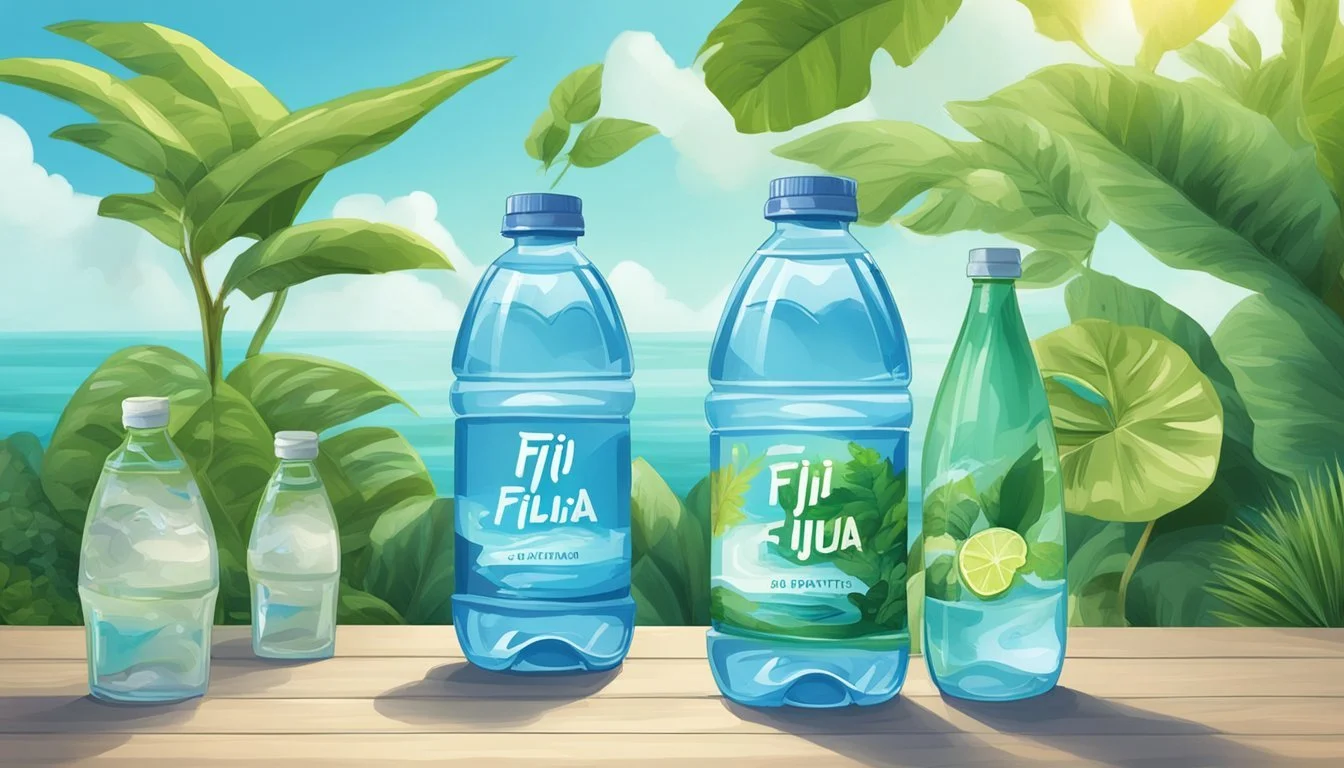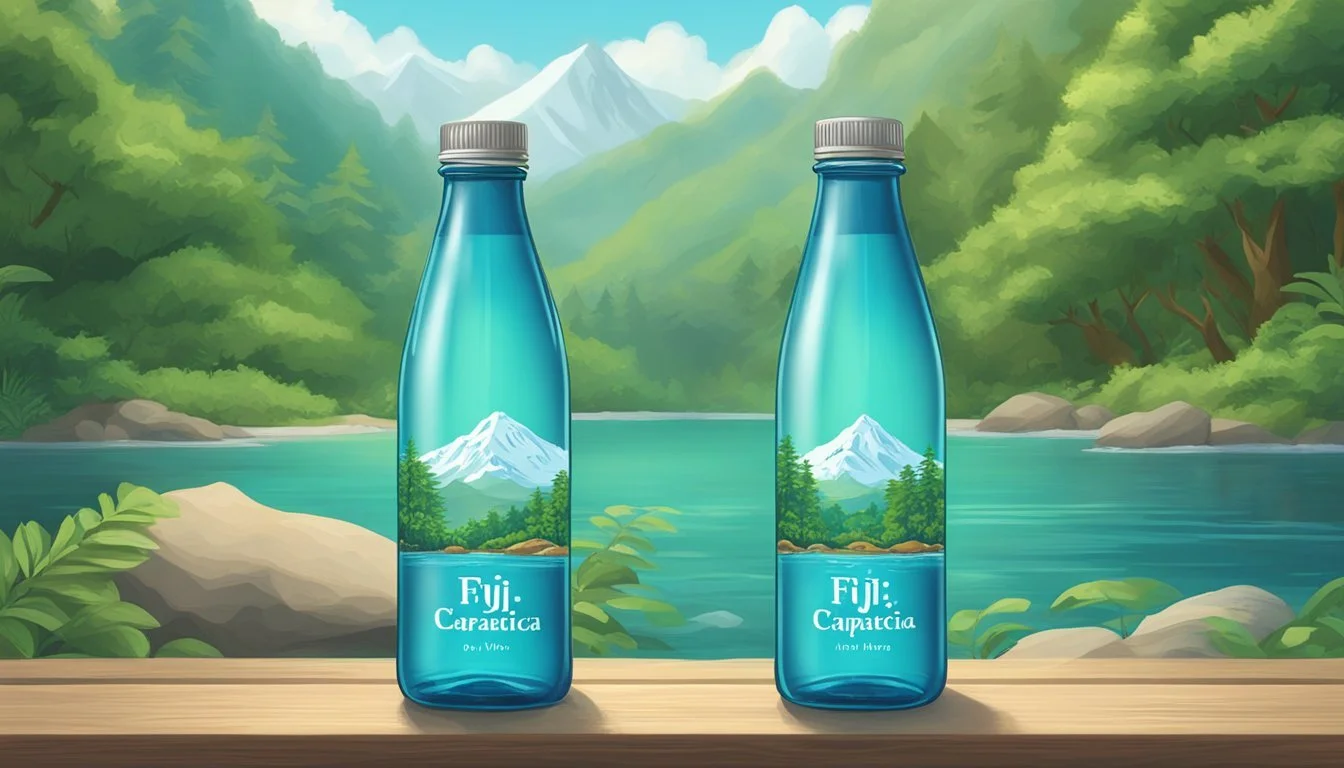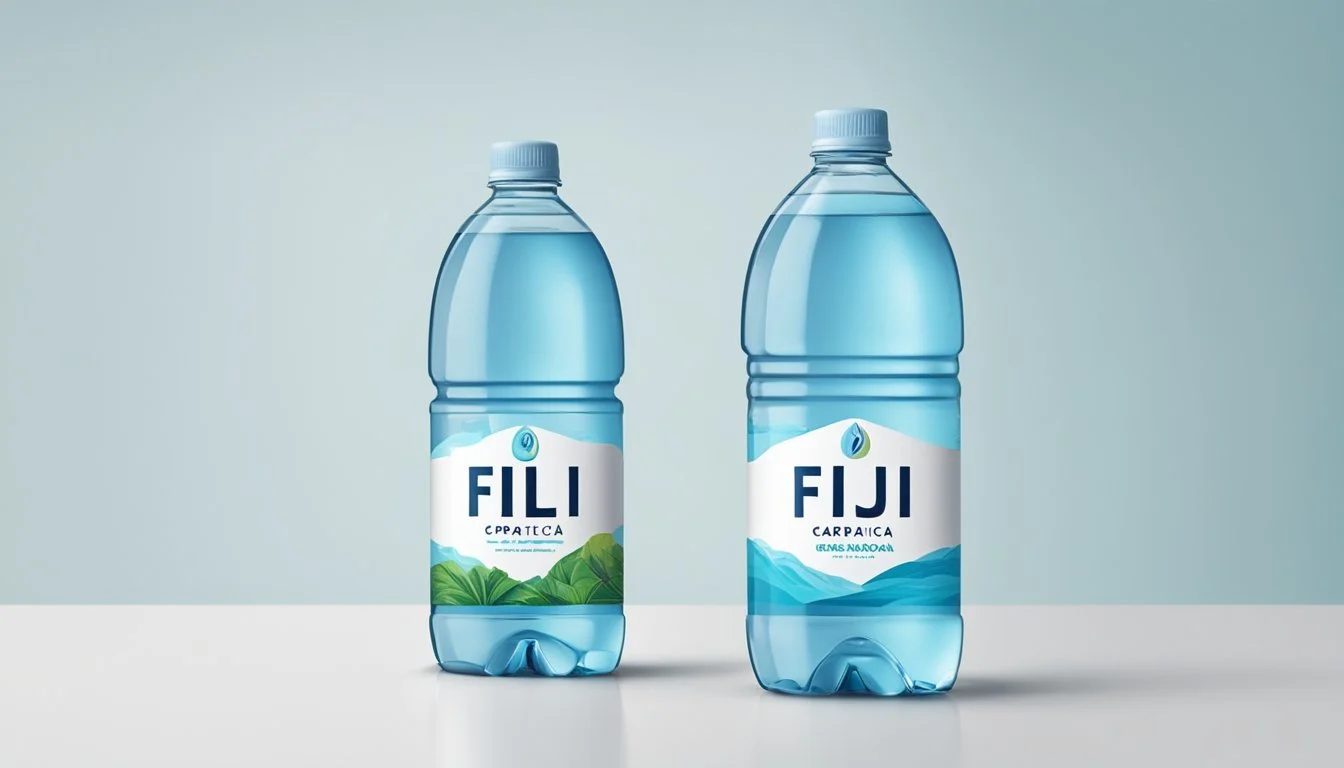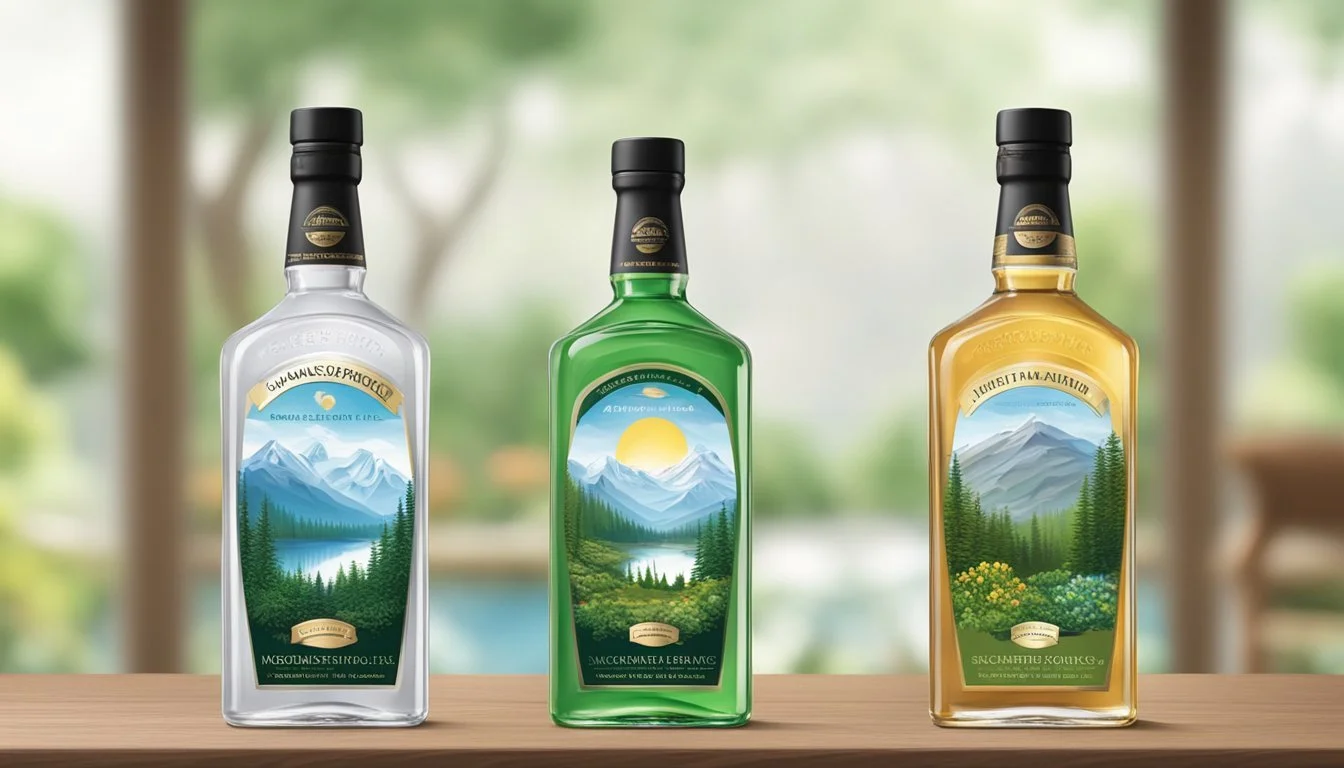Fiji vs. Aqua Carpatica
Comparing Bottled Water Quality
When it comes to premium bottled water, Fiji Water and Aqua Carpatica are two names that frequently come up in discussions. Fiji Water claims a smooth taste and natural filtration through volcanic rock, providing it with a unique mineral profile. Aqua Carpatica, on the other hand, boasts naturally low nitrate levels and a crisp, clean taste sourced from the Carpathian Mountains.
While personal preferences on taste can be subjective, some clear differentiators exist between these two brands. Aqua Carpatica is particularly noted for its purity and minimal environmental impact, making it a preferred choice for environmentally conscious consumers.
By comparing the sourcing, mineral content, and environmental impacts of these two brands, this post aims to help readers make an informed choice on which bottled water suits their lifestyle and values best. Dive into the details and discover which water brand stands out for you.
Overview of Bottled Water
Bottled water is a popular choice for hydration, offering convenience and portability. Consumers can choose from a variety of bottled water brands, each touting different source origins, minerals, and benefits. The primary categories include spring water, purified water, mineral water, and artesian water.
Packaging is a crucial element in bottled water. Bottles are commonly made from materials such as plastic (PET) and glass. PET plastic is lightweight and shatter-resistant, making it a popular choice. On the other hand, glass bottles are often seen as premium due to their recyclability and sustainability.
However, single-use plastic bottles are a major environmental concern. They contribute to pollution and require significant resources to produce. To mitigate this, some brands have started using recycled plastic or offering refillable options.
Environmental Impact is another factor. Single-use plastics can end up in oceans and landfills, posing hazards to wildlife. Choosing bottled water in glass or recycled PET can be more sustainable. Additionally, some companies are exploring biodegradable materials for their bottles.
Sustainability Initiatives are becoming more common among bottled water producers. Brands are increasingly focusing on reducing their carbon footprint by using renewable energy in manufacturing and optimizing their distribution methods to minimize environmental impact.
Consumers are encouraged to be mindful of packaging materials and opt for eco-friendly options when possible. Making informed choices can help reduce the negative effects on the environment while still enjoying the benefits of bottled water.
Fiji Water and Aqua Carpatica: Brand Origin and Source
Fiji Water and Aqua Carpatica are renowned brands that source their waters from unique and pristine environments, each offering distinct qualities due to their geographical and geological origins.
Fiji Water: Sourced from the Yaqara Valley of Viti Levu
Fiji Water originates from an artesian aquifer situated in the Yaqara Valley on the island of Viti Levu in Fiji. This region is characterized by its volcanic rock formations, which naturally filter the water.
The aquifer's isolation protects it from contaminants, ensuring purity and a signature mineral profile. The water collects in a confined space, making it naturally free from pollution. Bottled directly at the source, Fiji Water maintains its quality through minimal processing.
The volcanic rock contributes to the water's softness and slightly alkaline nature. These elements make Fiji Water distinct with a crisp and smooth taste, appealing to consumers seeking premium bottled water.
Aqua Carpatica: Sourced from the Carpathian Mountains
Aqua Carpatica comes from the Carpathian Mountains, a region known for its rich natural springs and pristine environment. Sourced specifically from an aquifer deep beneath these mountains, the water benefits from natural filtration through layers of limestone.
This geological process renders the water naturally nitrate-free, an uncommon feature among bottled waters. The limestone acts as a natural barrier, ensuring that the water remains pure and enriched with essential minerals.
Bottled directly at the source, Aqua Carpatica's water is celebrated for its clean taste and high purity. The unique conditions of the Carpathian Mountains contribute to water quality that stands out in the premium water market.
Comparative Analysis of Water Quality
Both Fiji and Aqua Carpatica offer high-quality bottled water, but they differ in their mineral content, purity, and pH levels. These factors are essential for consumers focused on health and hydration efficiency.
Mineral Content and Health Benefits
Fiji Water contains a notable amount of silica, which supports skin, nails, and bone health. It also features calcium, magnesium, and a moderate level of sodium.
Aqua Carpatica emphasizes its low-sodium content, making it suitable for those monitoring salt intake. It also contains significant levels of nitrate, which, while naturally occurring, is higher compared to other brands. The presence of calcium and magnesium contributes positively to bone and cardiovascular health.
Purity and Contaminants
Fiji Water undergoes rigorous testing to ensure no contaminants exceed FDA limits. It's sourced from an artesian aquifer, maintaining its purity from environmental pollutants.
Aqua Carpatica is bottled at the source in Romania and is tested for over 2,000 potential contaminants. It prides itself on being free from common pollutants like heavy metals and microplastics. The brand also focuses on reducing single-use plastics.
pH Level and Hydration Efficiency
Fiji Water has a pH level of approximately 7.7, making it slightly alkaline. This pH level is optimal for maintaining natural body fluid balance and enhancing hydration.
Aqua Carpatica's pH varies between still and sparkling versions, with the still water being more neutral around 7.4 and the sparkling water being slightly more acidic. This can influence personal preference and hydration efficiency, depending on one's health needs and taste.
Each brand offers unique benefits, catering to different health and hydration requirements. Consumers should consider these factors when choosing between Fiji and Aqua Carpatica.
Packaging and Environmental Impact
The packaging materials and waste management practices of Fiji Water and Aqua Carpatica reveal significant differences in their environmental impacts. These differences are crucial for consumers who are concerned about sustainability and waste reduction.
Material Use: Plastic vs. Glass
Fiji Water predominantly uses single-use plastic bottles, which have been criticized for their environmental impact. The production and disposal of these bottles contribute significantly to plastic waste and pollution. The bottles are made from PET (Polyethylene Terephthalate), a material that is not biodegradable and poses long-term environmental concerns.
In contrast, Aqua Carpatica often utilizes glass bottles for packaging. Glass is a more sustainable option as it is recyclable and can be reused multiple times, reducing waste. The production of glass also has a lower environmental footprint compared to plastic, as it doesn't release harmful microplastics into the environment.
Recycling and Waste Management
Fiji Water’s reliance on single-use plastic bottles creates challenges in terms of recycling and waste management. While PET bottles are technically recyclable, the actual recycling rates are low, resulting in a considerable amount of plastic entering landfills and oceans.
Aqua Carpatica benefits from the recycling infrastructure around glass. Glass bottles are more frequently and effectively recycled. They can be remanufactured into new bottles without loss of quality, minimizing waste. This efficient waste management system helps reduce the overall environmental impact compared to plastic bottles.
By understanding the differences in material use and waste management between these two brands, consumers can make informed choices that align with their values around sustainability.
Tasting Profile
The tasting profiles of Fiji and Aqua Carpatica bottled waters are influenced by their unique mineral compositions, which can affect taste preferences. Conducting a taste test highlights these differences, helping to determine which water stands out in various aspects.
Minerals and Flavor Influence
Mineral content significantly impacts the flavor of bottled water. Fiji Water is known for its high silica content, which gives it a smooth texture and slightly sweet taste. It also contains bicarbonates, calcium, and magnesium, adding to its balanced mineral profile and refreshing flavor.
In contrast, Aqua Carpatica boasts a naturally nitrate-free status and low sodium content. This results in a clean, crisp taste. The presence of electrolytes, such as potassium, enhances hydration without overshadowing the water’s pure flavor. The subtle mineral presence in Aqua Carpatica provides a distinct but mild taste, making it suitable for those who prefer a more neutral water profile.
Conducting a Taste Test
A structured taste test can reveal personal preferences between Fiji and Aqua Carpatica. Participants should use identical glasses and serve both waters chilled to standardize conditions.
Testing Criteria:
Initial Taste: Evaluate the first impression upon sipping.
Aftertaste: Consider the lingering flavor post-swallow.
Mouthfeel: Assess the smoothness and texture during consumption.
Overall Refreshment: Judge based on the feeling of hydration and satisfaction.
By focusing on these criteria, individuals can pinpoint specific preferences. Significant differences, like the sweetness from Fiji’s silica or the crispness from Aqua Carpatica’s low sodium, become evident. These diverse characteristics allow testers to make an informed choice based on their flavor and texture preferences.
Market Perception and Consumer Preferences
Both Fiji Water and Aqua Carpatica have established themselves within the premium bottled water market, though their consumer bases and market perceptions differ significantly.
Brand Recognition
Fiji Water is widely recognized and often associated with luxury and superior quality. A survey reported Fiji Water as the most favored bottled water brand among American consumers, resulting in a high net favorability rating. Its branding emphasizes its unique source – an aquifer deep within the Fiji islands – which adds to its exotic appeal.
Aqua Carpatica, hailing from the Carpathian Mountains in Romania, is recognized for its emphasis on natural purity and low nitrate levels. Although less prominent in global markets compared to Fiji, it has carved out a niche among consumers who prioritize health benefits and mineral content over brand prestige.
Pricing and Value for Money
Fiji Water is positioned at the higher end of the price spectrum among bottled waters. Consumers often pay a premium for its perceived quality and origin story. For instance, on platforms like Amazon, Fiji Water's prices reflect its luxury status.
Aqua Carpatica tends to be priced more competitively, offering a good balance between cost and quality. Its affordability makes it an attractive option for health-conscious consumers who also value cost-efficiency. The difference in price points between the two brands is significant, influencing consumer choice based on budget considerations and perceived value for money.
Both brands offer products that align with specific consumer values, from luxury and prestige to health benefits and affordability, driving their respective market perceptions and consumer preferences.
Regulatory Standards and Certifications
Fiji and Aqua Carpatica both adhere to strict regulatory standards and distinguish themselves through various certifications, ensuring their water's quality and safety. This helps consumers trust the purity and safety of each brand.
International Standards Compliance
Fiji Water and Aqua Carpatica comply with international regulations, such as those set by the World Health Organization (WHO) and the European Food Safety Authority (EFSA). These standards ensure their bottled water meets essential safety, purity, and health requirements.
Fiji Water is sourced from a protected artesian aquifer in Fiji, adhering to stringent quality control to prevent contamination. In comparison, Aqua Carpatica is drawn from naturally occurring springs in the Carpathian Mountains, following rigorous European regulations to maintain its natural quality and mineral content.
Both brands undergo regular testing for contaminants, including heavy metals and microbiological agents. This consistency ensures consumers receive water that is safe and beneficial for health.
Certifications and Quality Signals
Fiji Water holds several certifications that attest to its quality and commitment to environmental practices. These include ISO 14001 for environmental management systems and ISO 9001 for quality management systems. Additionally, the brand promotes eco-friendly packaging.
Aqua Carpatica also boasts numerous certifications, reflecting its high quality and purity. It is certified by ISO 9001 for quality and ISO 14001 for environmental management, similar to Fiji Water. Furthermore, it emphasizes naturally occurring low nitrate levels, which are a significant health benefit.
Both Fiji Water and Aqua Carpatica display these certifications prominently to assure consumers of their reliability and safety. These signals help differentiate them in the crowded bottled water market, highlighting their dedication to quality control and consumer health benefits.
Conclusion
Fiji Water and Aqua Carpatica both offer distinct features that cater to different priorities of consumers.
Wellness:
Fiji Water is lauded for its natural artesian origin, providing essential electrolytes that can aid hydration and skin health. Aqua Carpatica, sourced from the Carpathian Springs, boasts a unique mineral profile that supports overall well-being. Both brands emphasize purity and natural benefits, making them attractive to health-conscious individuals.
Quality Control:
Both companies maintain stringent quality control measures. Fiji Water undergoes multiple filtration processes to ensure clean, safe water. Aqua Carpatica prides itself on being nitrate-free, a significant consideration for those wary of water contaminants.
Sustainability:
Aqua Carpatica markets itself as an eco-friendly choice, highlighting its commitment to environmentally conscious practices. Fiji Water faces criticism for its reliance on single-use plastics, posing concerns about long-term environmental impacts.
Environmental Impact:
Fiji Water’s plastic packaging can lead to environmental and potential health issues due to endocrine-disrupting chemicals. Aqua Carpatica’s efforts toward sustainable packaging make it a favorable option for environmentally minded consumers.
Aspect Fiji Water Aqua Carpatica Wellness Natural electrolytes, skin health benefits Rich mineral profile, supports well-being Quality Control Multi-stage filtration Nitrate-free, stringent standards Sustainability Criticized for single-use plastic Eco-friendly practices, sustainable packaging Environmental Impact Single-use plastic, potential health risks Lower environmental footprint, focused on sustainability
More About Fiji
Fiji vs Mountain Valley Spring Water: Which Bottled Water is Better?
Fiji vs Whole Foods Italian Still Mineral water: Which Bottled Water is Better?
More About Aqua Carpatica
Acqua Pana vs Aqua Carpatica: Which Bottled Water is Better?
Aqua Carpatica vs Alkaline88: Which Bottled Water is Better?
Aqua Carpatica vs Cascade Mountain: Which Bottled Water is Better?
Aqua Carpatica vs Castle Rock: Which Bottled Water is Better?
Aqua Carpatica vs CBD Living: Which Bottled Water is Better?
Aqua Carpatica vs Crystal Geyser: Which Bottled Water is Better?
Aqua Carpatica vs Crystal Lake: Which Bottled Water is Better?
Aqua Carpatica vs Essence pH10: Which Bottled Water is Better?
Aqua Carpatica vs Hawaii Volcanic: Which Bottled Water is Better?
Aqua Carpatica vs Hawaiian Springs: Which Bottled Water is Better?
Aqua Carpatica vs Kirkland Signature: Which Bottled Water is Better?
Aqua Carpatica vs Liquid Death: Which Bottled Water is Better?
Aqua Carpatica vs Open Water: Which Bottled Water is Better?
Aqua Carpatica vs Proud Source: Which Bottled Water is Better?
Aqua Carpatica vs Purely Sedona: Which Bottled Water is Better?
Aqua Carpatica vs Richard's Rainwater: Which Bottled Water is Better?
Aqua Carpatica vs Simple Truth: Which Bottled Water is Better?
Aqua Carpatica vs Solan de Cabras: Which Bottled Water is Better?
Aqua Carpatica vs Talking Rain AQA: Which Bottled Water is Better?
Aqua Carpatica vs Weird Water: Which Bottled Water is Better?
Aqua Carpatica vs Whole Foods 365: Which Bottled Water is Better?
Aqua Carpatica vs Whole Foods Italian Still Mineral water: Which Bottled Water is Better?
Boxed Water vs Aqua Carpatica: Which Bottled Water is Better?
Core Hydration vs Aqua Carpatica: Which Bottled Water is Better?
Ice Mountain vs Aqua Carpatica: Which Bottled Water is Better?
Icelandic Glacial vs Aqua Carpatica: Which Bottled Water is Better?
Just Water vs Aqua Carpatica: Which Bottled Water is Better?
Mountain Valley Spring Water vs Aqua Carpatica: Which Bottled Water is Better?
Nestle Pure Life vs Aqua Carpatica: Which Bottled Water is Better?
Poland Spring vs Aqua Carpatica: Which Bottled Water is Better?
San Pellegrino vs Aqua Carpatica: Which Bottled Water is Better?
Smartwater vs Aqua Carpatica: Which Bottled Water is Better?
Topo Chico vs Aqua Carpatica: Which Bottled Water is Better?
Zephyrhills vs Aqua Carpatica: Which Bottled Water is Better?







